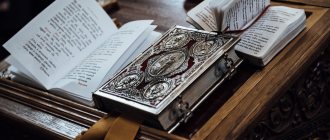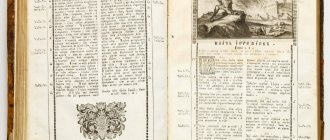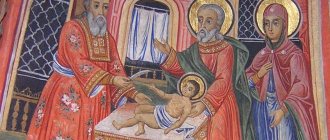read the New Testament online (bible-book.org)
- Commentary on the Gospel of John
- Commentary on 1 Corinthians
The New Testament is the most important book in the world for Christians. Rather, it is not one book, but a collection of books that was written by many authors. This rich collection tells us about the acts and teachings of Jesus and his apostles.
It would also be interesting to read about what was written by opponents of Jesus or great pagan historians about Jesus and the early Church. Unfortunately, such references are still few, but they are enough to ensure that no competent professional can challenge the historicity of the most important periods of Jesus’ life.
The New Testament is a sufficient source for us to know Jesus as our Savior.
When opening the New Testament, one can immediately see that it includes different books. Firstly, it first contains four gospels (Matthew, Mark, Luke and John), then the Acts of the Apostles and a large number of epistles, and finally the Revelation of John the Theologian. How did these books come to be, and how did this collection called the New Testament become one book?
What is this book? [↑]
The core of the New Testament is the story of the life and deeds of a certain man named Yeshu
(Jesus), which existed among his adherents and followers. These oral traditions were written down in the form of four gospels by four different people about whom we know nothing except pseudonyms: Mark, Matthew, Luke and John (a transcription of the Hebrew name Yohanan, in Russian - Ivan). Whether these people were disciples of the one they write about - even Christians themselves have no evidence of this.
Since most of the New Testament writers were Jewish Christians or Judaizers
(gravitated towards Judaism) by non-Jews, that is, Christianity arose as a sect in Judaism, then the ethical and religious concepts of the New Testament are closely related to Judaism.
It is difficult to judge the historical reliability of the New Testament, since the text of the gospels contains many errors and inconsistencies - concerning both the history of the Jewish people and the facts of the biography of Yeshu himself.
Dating of the Gospel texts
If it was not possible to obtain an exhaustive answer to the question of who wrote the New Testament, then with the dating of the creation of its individual parts, things are much better. Thus, based on the results of the same linguistic examination, as well as on a number of other signs, it was possible to conclude that the earliest text included in it is not the Gospel of Matthew, which usually comes first in their list, but from Mark. Scientists believe that the time of its writing was the 60s or 70s of the 1st century, that is, a period separated by three decades from the events described.
It was on the basis of this work that the Gospels of Matthew (70-80s) and Luke (late 90s) were subsequently written. The author of the latter, by all accounts, is the creator of the New Testament book “The Acts of the Apostles.” At the same time, at the end of the 1st century AD, the Gospel of John appeared, the author of which, apparently, did not have communication with the first three evangelists and worked independently.
The image of Yeshu in the New Testament [↑]
A careful reading of the New Testament shows that Jesus accepted all the basic tenets of the Jewish religion. These include the unity and omnipotence of G-d, the value and holiness of the Temple in Jerusalem, the authority of the Jewish scriptures, the chosenness of the people of Israel, and the hope of Israel's redemption.
Moreover, the gospel texts indicate that he followed the commandments common to pious Jews: tzedakah, prayer and fasting. He recognized the value of the Temple, sacrifices and religious festivals. He read the Jewish scriptures, quoted them, and clearly regarded them as the most authoritative source. He apparently attended synagogue services regularly; his style of interpretation of biblical texts largely follows the style adopted in the synagogue.
However, in the Jewish worldview there is no interest in the identity of the man called Jesus of Nazareth. There is no information about the founder of Christianity in our books written in the first thousand years of the existence of the Christian religion. And although in the Jewish tradition there have always been people, spiritual mentors, who called themselves “great teachers,” there was no person with exactly such a biography.
However, the hero of the gospels had a real prototype, and perhaps more than one. There are several references to this man in the Talmud, dating back to different periods. They were preserved in those editions of the Talmud that escaped censorship - that is, in those published outside the territories of Christian states.
Translations
The New Testament was originally written in ancient Greek, and therefore pastors must be able to read the original texts. A significant fruit of the Reformation was the desire to bring the Bible to every person in his own language. The Bible or parts of it have been translated into numerous modern languages. As language changes over decades and centuries, new translations are needed. Globally, there are different translations, some of which strive for literal translation and some for smooth translation. This site uses the 1992 translation from Finnish translations, from the English Standard Version and from the Russian Synodal translation.
Essene sect during the Second Temple [↑]
Scientists believe that Christianity owes its origin to the Jewish sect of the Essenes, which dissociated itself from traditional Judaism in the first quarter of the 2nd century BC. The Essenes went to live in the desert and almost ceased contact with the outside world.
The Essenes believed that all Jews were “steeped in sin”; in the future, when the Temple is cleansed, the sect will hold a temple service, and until then, having abandoned sacrifices, it considered itself as a temple, and its community life as having a sacred meaning equivalent to a sacrificial cult.
The community that lived in the Qumran area (from the 1st century BC until the Jewish War) was apparently an extreme branch of the Essenes. It was the Qumran community that was the owner of the Dead Sea Scrolls, or Qumran manuscripts - a large number (about 1000) of manuscripts discovered in the caves of Qumran and which are the oldest known fragments of the Pentateuch.
Members of the community preached extreme asceticism, leading a hermit lifestyle. The community was dominated by relationships based on collectivism and community of property. They carefully followed their own religious precepts (sometimes more strictly than is generally accepted in Jewish law), paying particular attention to ritual purity. The life and behavior of members of the Qumran community were regulated to the smallest detail. For example, the charter ordered community members to stay awake “a third of all nights of the year to read the Torah and interpret the Law,” and devote the time from sunset to dawn to physical labor (agriculture and crafts). Their communal structure is a prototype of modern monasteries and kibbutzim.
The Essenes believed that before the onset of the “end of days,” G‑d would create (or had already created) a community of His chosen ones who would be saved from His wrath brought upon the majority of humanity, and they were waiting for the coming of the Messiah, who would gather these chosen ones.
From the limited information about the religious activities and teachings of a Jew named Yohanan ben Zecharya, who later went down in history under the name John the Baptist, we can conclude that in his religious worldview he was close to the Essenes or to the Qumran community. He lived and preached near the Jordan River, just a few kilometers from the main Essene community.
Yohanan heralded the approach of the end of the world and the coming of the Messiah and called on the Jews to repent of their sins and bathe in the waters of the Jordan to remove ritual impurity.
Yeshu - from a Jewish point of view [↑]
The book “The History of the Jewish People” provides a Jewish view of the events in which the main character of the New Testament took part. Under the new Roman governor in Caesarea, Pontius Pilate, life for the Jews became even harder, and more and more “prophets” began to wander around Judea and predict the imminent arrival of the Moshiach, who would free the people from the power of foreigners.
One of the contenders for the role of Moshiach
was Yeshu (Jesus) from Nazareth (Nazareth). He first prophesied in Galilee, his homeland. Apparently, somewhere during his travels he met Yochanan ben Zecharya, under whose guidance he performed the ritual ablution before coming to Jerusalem.
In 3795 (35 AD), accompanied by a large number of people, Yeshu came to Jerusalem for the Passover holiday, where he would have been tried for witchcraft ( kishuf
) and incitement (
Madiah
), however, with the abolition of the Sanhedrin, Jews lost the ability to condemn criminals to execution - according to Jewish law, only
the Sanhedrin
can sentence death. Roman soldiers captured the troublemaker and brought him to Pilate, who decided to crucify him on the cross - as the New Testament says, at the insistence of the people.
After the leader's death, many of his followers fled Jerusalem. However, after some time, a rumor began to spread from mouth to mouth that the executed Mashiach
rose from the grave and was resurrected. This legend caught the imagination of many people and the number of Yeshu's followers increased.
The first Christians (as the founders of the new sect called themselves) were Jews of Jewish origin and fulfilled all the commandments of the Torah, while believing in the special spiritual mission of their leader Moshiach
. But subsequently their faith spread among other peoples who did not accept the fulfillment of the commandments. For a long period, there were two types of Christians: Jews and non-Jews, until the Jewish movement in Christianity completely ceased. Some Jews returned to the Torah, while the other part completely disappeared among the peoples of the world.
Rambam - about fake religions
What danger does the New Testament pose to the Jewish people? Rambam's (Maimonides) letter, “The Epistle to Yemen, or the Gate of Hope,” sent to Yemen from Cairo in 1172, explains in detail the harmful nature of counterfeit religions.
“And then a new sect arose... it set out to plague our people in a new way. This attacker was Yeshua from Nazareth - a Jew. He pretended to be a messenger of God who came to clarify ambiguities in the Torah, claiming to be the Messiah promised to us by all the prophets. His interpretation of the Torah, in full accordance with his plan, led to the abolition of it and all its commandments and allowed the violation of all its warnings. A considerable time after his death, a religion arose, of which he is considered the founder. It spread among the sons of Esau, whose conversion he himself had not even thought of.
Both of them (Yeshu and Muhamed) passionately desired to liken their lies to the Divine law. But what is created by man can be likened to what was created by the Almighty only in the eyes of a child who does not understand anything...
Daniel explains to us that the intention of that (false prophet) will be to undermine and annul, to replace the Torah, which is in our hands, as it is said: “And he will dream of changing the (timed) times (of their holidays) and their law, and they will be given into his hands for a term, and terms, and half a term” ( Daniel 7:25
)”.
New Testament and Christian religion [↑]
The Christian religion, having gone through a difficult period of self-determination, has radically moved away from the concepts that were preached in the New Testament by the one whom it considers its teacher. Throughout the 2nd, 3rd and early 4th centuries, the Christian Church was shaken by constant heresies and schisms, and only after the Council of Nicaea in 4085 (325) did it take the forms that we see now.
It seems that in its desire to separate from Judaism and oppose itself to it, the Council of Nicaea was even ready to reject the unambiguous text of its own New Testament, moving the day off from Saturday to Sunday, changing the date of the celebration of Christian Easter, and most importantly, adopting as a symbol faith the idea that “God the Son is consubstantial with the Father,” which contradicts both Judaism and common sense. (By the way, this and some other symbols of the Christian faith are borrowed from Kabbalah, the secret side of Judaism).
Be that as it may, the religion founded by the followers of Yeshu had a huge influence on all civilized humanity. Rambam in “Laws of Kings” ( 11:4
) writes that Islam and Christianity “paved the way” for the idea of Moshiach. With the spread of these religions, humanity became acquainted with the basic concepts of the Torah and commandments, although not entirely correctly. Now humanity is more prepared for the revelation of the Name of the Creator, which, hopefully, will happen very soon.
Unanswered Question
The researchers' work is partly facilitated by the fact that the time interval between the creation of the texts and their earliest surviving copies is relatively short. Thus, the oldest surviving manuscript is a passage from the Gospel of Matthew, dating from the year 66, that is, created no more than 20-30 years after the original. For comparison, we can recall that the dating of the oldest manuscript with the text of Homer’s Iliad lags behind the date of its creation by 1,400 years.
True, in the above case, we are talking about only a small fragment of the Gospel, while the earliest complete text, discovered in 1884 among the manuscripts of the Sinai Monastery, dates back to the 4th century, which is also quite a lot by the standards of historians. In general, the question of who wrote the Bible - the New Testament and the Old - remains open. Exciting minds, it attracts new generations of researchers to work.
To the lost sheep of the house of Israel? [↑]
If Christians believed that Jesus was exclusively their Messiah, then faith in him would be of little concern to Jews. However, Christians claim that he is not only theirs, but also our Jewish Messiah, that he is the same Savior about whom the Jewish prophets spoke. Moreover, they try to prove their statement with quotations from our Torah.
Even if we suddenly decide that the New Testament is a reliable source of information, then even according to it, Jesus was not and could not be the Jewish Messiah, and there are many reasons for this. For example, according to our Tradition, the Jewish Messiah is a person born naturally from a father and mother. He cannot be G-d or be born supernaturally from the virgin birth, as Christians claim.
The Torah says that the Messiah will be a direct descendant of King David. But if the “father” of Jesus was G‑d Himself, then Christian claims that he descends from David on his father’s side and citing the genealogy of Jesus become meaningless. Our tradition clearly speaks of the Messiah that he will restore peace between all nations and Israel, complete the process of returning the Jews to the Holy Land, build the Temple - none of this was embodied in Yeshu.
The language of Jesus Christ's contemporaries
It is extremely difficult to establish who wrote the New Testament also because none of the original texts have survived to this day. Moreover, it is not even known in what language it was compiled. During the era of the earthly life of Jesus Christ, the bulk of the population of the Holy Land spoke Aramaic, which belongs to a very large family of Semitic dialects. One form of Greek called “koine” was also widespread. And only a few residents of the state communicated in that Jewish dialect, which formed the basis of Hebrew, which was revived after many centuries of oblivion and is today the state language of Israel.
False messiahs in the history of the Jewish people [↑]
Belief in the coming of the Messiah has always been an important part of Jewish doctrine. The Jewish teacher of the law (Rambam) included this belief among the 13 basic principles of Judaism.
Mashiach is a Jewish leader, a man of flesh and blood, possessing exceptional wisdom, firmness and fortitude. It is he who will bring complete - physical and spiritual - deliverance to the Jewish people and establish eternal peace, love, prosperity and moral perfection throughout the entire earth.
Rambam in his fundamental work “Yad Chazaka” writes: “If he succeeded in his endeavors and defeated all the surrounding nations, and built the Temple in the place designated for it, and gathered Jews from the countries of dispersion, this is undoubtedly the Moshiach.” If all this did not happen, then “it is obvious that this was not the one whose appearance was promised by the Torah, but simply one of the kings of the dynasty of David, righteous and worthy, who died. And the Almighty made his appearance a test for the people.” And there have been several such trials in the history of the Jewish people.
During one of the difficult periods, when the Temple had been in ruins for more than 60 years, and most of the Jews were in Galut - Exile, scattered throughout the territory of the Roman Empire, the Roman Emperor Hadrian decided to build a fortress on the site of Jerusalem and populate it with pagans.
A man of unprecedented courage and fearlessness, Shimon Bar Kozeva led the Jews in an uprising against the Romans and soon cleared almost the entire Eretz Israel
.
Rabbi Akiva and other sages of that generation believed that Bar Kozev had the potential to become the long-awaited Moshiach. That’s why they began to call him Bar Kochba
- literally:
“son of the Star
.
Rabbi Akiva believed that it was he who was spoken of in the verse: “A star rose from Jacob.” However, after Bar Kozeva was killed by the Romans, it became clear that he was not the Moshiach
that everyone was waiting for.
Another famous pseudo-messiah, Shabtai Zevi, was born in the Ottoman Empire in 1626. From one passage in the book of Zohar it was concluded that Moshiach will come in 5408
year from the creation of the world (1648). Shabtai Zvi, who was an exalted ascetic student of Kabbalah, believed that Moshiach was himself. Crowds of enthusiastic Jews began to follow Shabtai, their numbers kept growing. The Sabbatian movement from Turkey spread throughout Europe. The Jews were broken by the terrible tragedy in Ukraine in 1648 - the Khmelnytsky genocide, the murder of hundreds of thousands of innocent people - and ongoing suffering, so they enthusiastically accepted the news of “imminent deliverance.”
Most rabbis of that time did not accept Shabtai as Moshiach, but did not announce this in the hope that repentance, correction and fulfillment of mitzvot
will not be in vain for the Jews, even if Mashiach does not come. Others remained silent for the sake of maintaining peace, in order to avoid conflicts. And only the rabbi of the Hamburg community, Rabbi Yaakov Sasportas (Saspoorts), tirelessly wrote letters to rabbis and community leaders in other cities, claiming that Shabtai Tzvi was a false messiah. But it was only after Shabtai converted to Islam that the Jews had to face the truth, although Sabbatianism as a sect continued to exist until the 19th century.
Exactly one hundred years after the birth of Shabtai Zvi - in 1726 - Yakov Leibovich Frank was born in southern Galicia. Having met the Turkish Sabbatians and becoming one of the members of the sect, Frank began to develop the theory of the transmigration of the soul of the Moshiach from the body of one person to the body of another. Soon Frank managed to convince a number of Jews that the soul of Moshiach was now in his body. But this “Mashiach” only led his Jewish followers away from Judaism, turning out to be a false prophet.
As we see, Jesus of Nazareth was not the only person whom the Jews considered Moshiach. And even in our time in Jerusalem from time to time there appear people who proclaim themselves Saviors. (In the Jerusalem psychiatric hospital Givat Shaul there is an entire department for “Mashiachs,” and this mass phenomenon is even described as the “Jerusalem Mashiism Syndrome”).
Religious persecution of Jews and missionary work [↑]
Almost from the moment of the emergence of Christianity, some of its adherents made it the goal of their lives to convert others, including Jews, to their religion. “Under the banner” of the New Testament, forced baptisms began in Spain during the reign of King Sisebut (612). Dagobert, king of the Franks (628-639), expelled those Jews who did not want to convert to Christianity. Germany, France, Spain, Portugal, England, Italy, Poland - throughout Europe, for one and a half thousand years, Jews were burned, drowned, buried alive, cut into pieces because they refused baptism. And even those who officially condemned the violence approved of the constant discrimination against Jews, the forced wearing of distinctive signs on their clothes, and all kinds of humiliation. All the moralists of the world, all the spiritual “fathers,” all the “saints” approved of this.
And although the official church condemned the Jewish pogroms that accompanied the crusades, and local bishops often personally tried to protect the Jews, in most cases the priests were unable to resist the angry crowds. And the fact that these crowds came to such an excited state was precisely the fault of those who, from church pulpits, instilled in people how dangerous it was to make a “deal with the devil.”
Messianic Jews and Jews for Jesus [↑]
Later Christian missionaries resorted to other tactics to convert to their faith: insinuating persuasion and cunning. Jews for Jesus
(
JewsforJesus
) is an active Christian mission whose employees are Baptists and evangelists. “Jews for Jesus” are simply Christians who disguise their religion as “Jewish” in order to attract Jews into their sect by distributing brochures and holding conversations with people in the streets, markets and squares, today on the Internet, mainly on social networks. They take advantage of people's ignorance to deceive them, claiming that for many centuries the “rabbis hid” from the Jews some vital information about Jesus that is in the Bible and available to the missionaries themselves. They spread fake news, outright lies, for example, that such and such a rabbi confirmed that the Moshiach has already come and he is Jesus, etc.
Supporters of Messianic Judaism
claim that Yeshua (Jesus) is the Messiah and savior of all mankind, whose coming was promised by the prophets, and accept non-Jews into their ranks, although they recognize that the Jewish people remained the chosen ones, and that certain commandments remain in force.
They hold services in something like synagogues, continue to celebrate Jewish holidays, set aside the Sabbath, and some even wear kippahs and circumcise boys. As a result, their religion turned into a kind of hybrid of Judaism and Christianity, which is actually impossible: for from the point of view of true Judaism, all
the commandments remain in force, and Jesus was not the Messiah at all.
The Bible is a repository of wisdom and knowledge
It is interesting to note that among representatives of modern Catholicism, admitting that there is no clear and unambiguous answer to the question of who wrote the New Testament is by no means considered blasphemy. This position was demonstrated by them during the Second Vatican Council, which lasted from 1962 to 1965. One of the articles of his final document prescribed from now on, instead of the names of the evangelists mentioned in the canon of holy books, to use the faceless wording - “holy authors.”
Orthodox circles also recognize the problem of identifying the authors of Holy Scripture. Eastern theologians, like their Western colleagues, are unable to answer the question of who wrote the Old and New Testaments, however, they argue that this does not call into question the holiness and spiritual significance of the texts included in them. One cannot but agree with them. The Bible has been and will forever remain the greatest repository of wisdom and historical knowledge, as a result of which it is held in deep respect by people of all religious persuasions.








